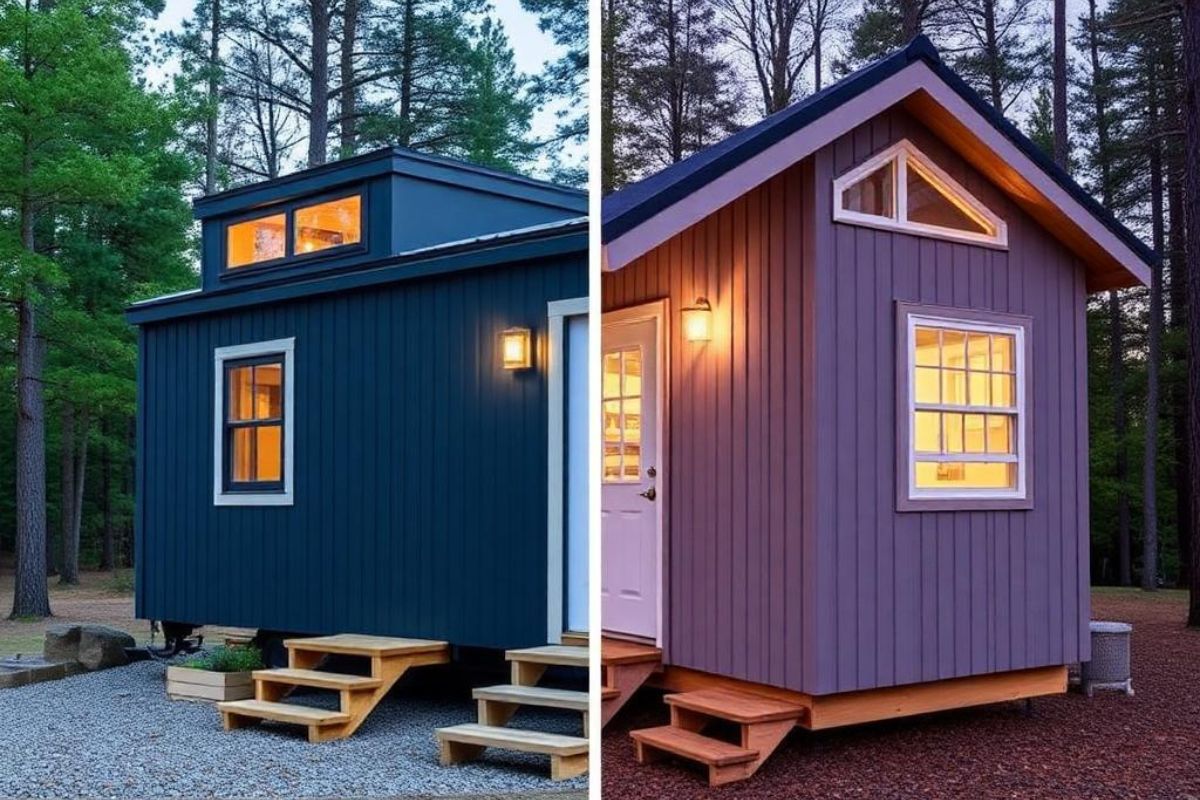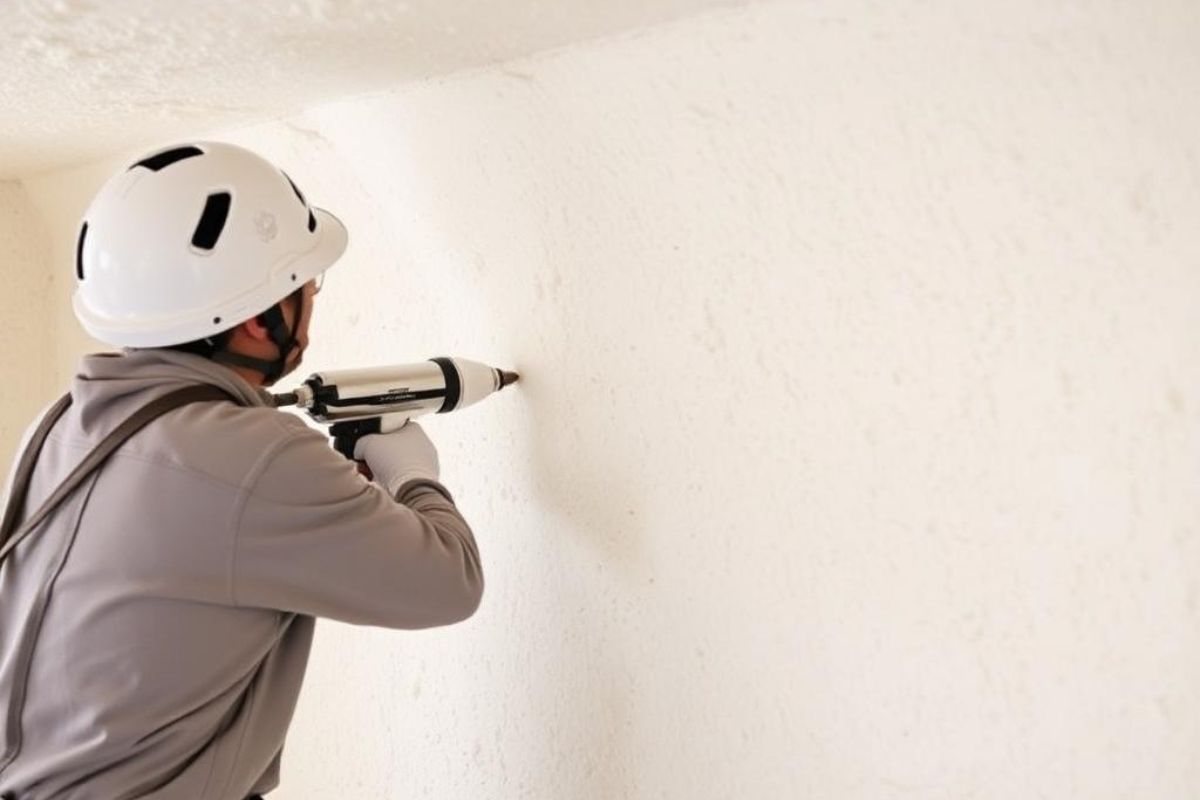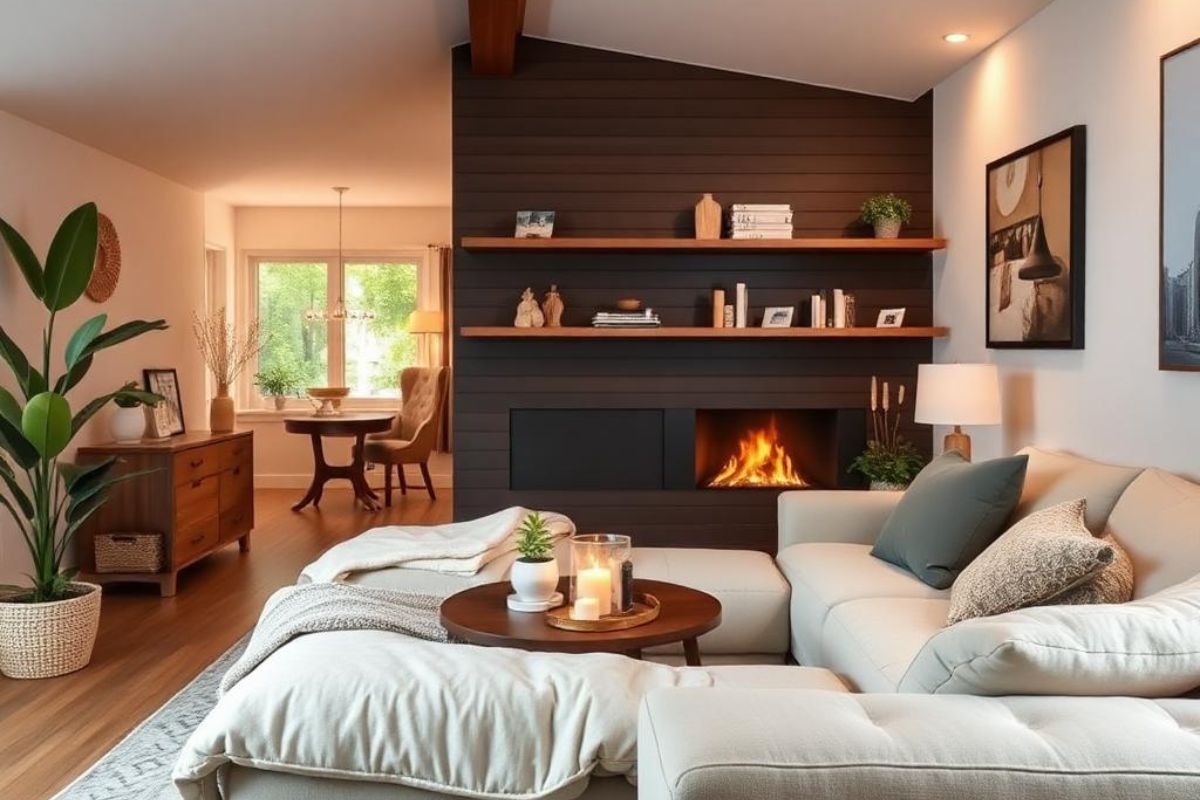When it comes to tiny homes, two of the most popular options are prefabricated (prefab) homes and custom-built homes. Prefab homes are built in a factory and then assembled on-site, while custom-built homes are constructed from the ground up based on personal design preferences.
Both options provide efficient living spaces and environmentally conscious designs, but which is better? Let’s figure it out here.
Cost Comparison
The first difference is their cost. Prefab homes are the cheaper option, typically costing around $86,335. They’re less expensive because they’re built in factories using standardized designs, allowing for mass production and lower labor costs. Another reason is that the controlled factory environment reduces waste and streamlines the construction process, further lowering expenses.
Conversely, custom-built tiny homes can cost significantly more, typically around $143,335. This higher cost comes from the personalized design process, the use of specific materials chosen by the homeowner, and the additional labor required to construct the home from scratch according to unique specifications.

For those looking for flexible payment plans, financing options such as installment loans online can make both prefab and custom-built homes more affordable. These loans allow buyers to pay for their homes in manageable chunks, making it easier to cover the higher costs associated with custom designs or additional features. It’s important, however, to weigh the total cost, including materials, labor, and financing, when deciding which option fits your budget best.
Construction Time
Another important consideration is the time it takes to construct your tiny home. Prefabricated homes are generally much quicker to complete because the components are built in a controlled factory environment. The assembly on-site usually takes only a few weeks, making this option ideal for those who want to move into their new home as soon as possible.
Custom-built homes, on the other hand, often take longer to complete. Since these homes are built from the ground up, they require more planning, design approvals, and construction time. Depending on the complexity of the design, custom-built homes can take several months or even longer to finish. If you’re in a hurry to settle into your tiny home, prefab construction speed may be a significant advantage.
Design Flexibility
When it comes to design flexibility, custom-built tiny homes have a clear advantage. With a custom-built home, you can personalize every aspect of the design, from the layout to the materials used, ensuring your home perfectly reflects your style and preferences. Whether you want unique storage solutions, specific materials, or a particular layout, a custom-built home offers complete creative freedom.
In contrast, prefab homes often come with standard designs and layouts. While some companies offer minor customization options, the level of flexibility is generally limited compared to custom-built homes. However, if you don’t require extensive customization and are happy with pre-designed layouts, prefab homes can still offer functional and attractive spaces that meet most needs.

Maintenance and Durability
Maintenance is an important factor to consider when choosing between prefab and custom-built tiny homes. Prefab homes are generally built using standardized materials designed for efficiency and ease of assembly, but they may require more maintenance over time.
Some prefab homes, especially those not on permanent foundations, may be more susceptible to wear and tear due to their lighter construction materials. This could lead to higher long-term maintenance costs, particularly for homes in regions with harsh weather conditions.
Custom-built homes, on the other hand, often use higher-quality materials and construction methods tailored to the homeowner's preferences. These homes tend to be more durable and built to last, especially if placed on a permanent foundation.
While the upfront cost is higher, custom-built homes can be easier to maintain in the long run due to the use of more robust materials and attention to detail during construction. The durability of a custom-built home can also add to its value, making it a more appealing long-term investment.
Sustainability and Materials
Sustainability is another factor to consider when deciding between prefab and custom-built tiny homes. Prefab homes are often seen as a more eco-friendly option because they are built in factories, which, as mentioned, reduces material waste and minimizes environmental impact. The controlled environment of a factory allows for more efficient use of resources, which can be a significant benefit for environmentally conscious buyers.
Custom-built homes, however, offer the flexibility to choose sustainable materials and eco-friendly building practices. If sustainability is a priority, a custom-built home allows you to source local or recycled materials and integrate green technologies, such as solar panels or energy-efficient appliances, that may not be available in prefab homes. Both options can be built with sustainability in mind, but the custom-built route offers more control over the specific materials and practices used.

Resale Value and Investment
While tiny homes may not always provide strong resale value, they can still serve as a valuable source of income. This is particularly true for custom-built tiny homes, which can command higher rental rates due to their personalized features and being on permanent foundations, especially if they’re situated in sought-after locations. They can be used as vacation rentals and for other income-generating purposes, such as home businesses and art studios.
Prefab homes can also generate rental income, particularly for short-term rentals or as flexible office spaces. Though the returns may not be as high as custom-built homes, prefab tiny homes are quicker and more affordable to set up, offering a practical option for those looking to generate an income stream efficiently.
Final Thoughts
When deciding between prefab and custom-built tiny homes, neither option is inherently better than the other. It all depends on your individual needs and priorities. If cost and quick construction are your top concerns, prefab homes might be the best choice. On the other hand, if you value customization and are willing to invest more time and money, a custom-built tiny home could be the way to go.






Share: